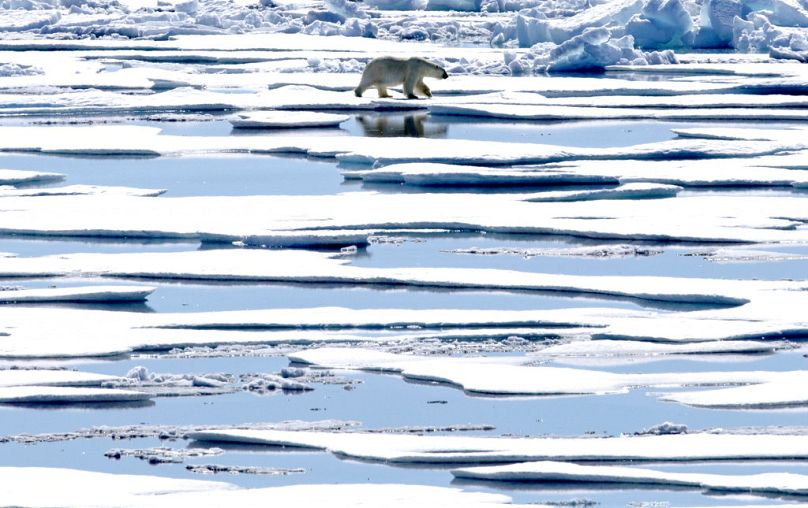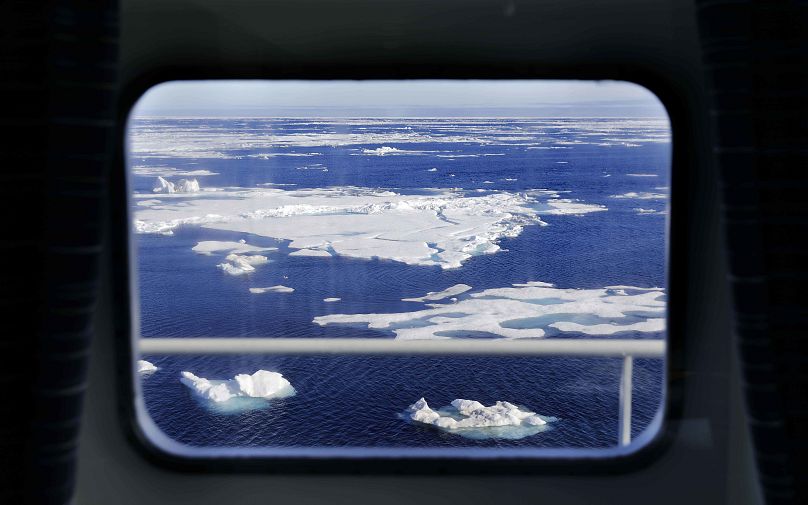The cryosphere — Earth’s ice sheets, sea ice, permafrost, polar oceans, glaciers and snow — is ground zero for climate change, and it pays no attention to rhetoric, only to our actions, Dr Julie Brigham-Grette and Dr Martin Siegert write.
2023 has been a year of climate disasters and ice loss. A glacial lake outburst flood devastated Sikkim in India. Swiss glaciers lost 10% of their remaining ice over just two years.
Sea ice around Antarctica hit all-time-low summer and winter records. Unprecedented fires raged across Canadian permafrost.
Parts of the Arctic and North Atlantic saw water temperatures 4-6°C higher than normal. It rained far inland in Antarctica, and Greenland saw its second-highest surface melt ever.
None of these tragic events surprised us, members of the global cryosphere scientific community, because — despite all the climate pledges from Paris in 2015 to Egypt in 2022 — greenhouse gas concentrations in the air have continued their steady march upwards.
This year, atmospheric carbon dioxide (CO2) concentrations officially hit 50% above pre-industrial levels: 424ppm, higher than at any point in at least 3 million years. 2023 is set to be the warmest year on record, probably by the largest margin ever.
Ground zero for climate change
Our message — the message of the cryosphere — is that this insanity cannot and must not continue. COP28 and this December must be when we correct course.
Some degree of planetary-wide damage from cryosphere loss is already locked in. We must prevent even worse impacts from a collapsing cryosphere for each additional tenth of a degree temperature rise, especially past the “lower” Paris Agreement limit of 1.5°C.
The cryosphere — Earth’s ice sheets, sea ice, permafrost, polar oceans, glaciers and snow — is ground zero for climate change.
This is because of the simple physical reality of the melting point of ice; or in the case of our rapidly acidifying polar oceans, the amount of CO2 in the atmosphere absorbed and turned to carbonic acid.
The warming impact of CO2, around 80% from fossil fuel use, already has led to steep glacier and ice sheet loss causing global sea-level rise, reduction of water resources from snowpack, and growing CO2 and methane emissions from thawing permafrost.
It has also caused dramatic reduction of sea ice, now alarmingly low in both polar oceans, and growing evidence of stress on keystone polar marine species, such as krill, salmon and cod, from polar ocean acidification, warming and freshening.
Refusing to say enough means dooming humanity for centuries, if not millenia
Enough. It is time to carve a line in the ice and snow: because of what we have learned about the cryosphere since the Paris Agreement was signed in 2015, 1.5°C is not merely preferable to 2°C. It is the only option.
At COP28, we call on global leaders to enshrine this reality in the cover decision: because of the cryosphere response, even 2°C is too high.
The Paris Agreement’s “well below 2°C” can mean just one thing: 1.5°C and 1.5°C alone. We therefore need a stocktake with clear guidelines to make 1.5°C a reality, a path to phase out fossil fuels, and financial mechanisms to support climate action as well as the adaptation, and loss and damage — most of it ultimately tied to irreversible cryosphere loss — now inevitable even below 1.5°C; but far worse above that.
Otherwise, world leaders are de facto deciding to burden humanity for centuries to millennia by displacing hundreds of millions of people from flooding coastal settlements, depriving societies of life-giving freshwater resources, disrupting delicately-balanced polar ocean ecosystems, and forcing future generations to offset long-term permafrost emissions.
This continued rise in CO2 is unacceptable.
The melting point of ice pays no attention to rhetoric, only to our actions.
Dr Julie Brigham-Grette is a glacial geologist and a professor in the Department of Geosciences at the University of Massachusetts Amherst, and Dr Martin Siegert serves as Deputy Vice Chancellor of the University of Exeter.
At Euronews, we believe all views matter. Contact us at view@euronews.com to send pitches or submissions and be part of the conversation.













